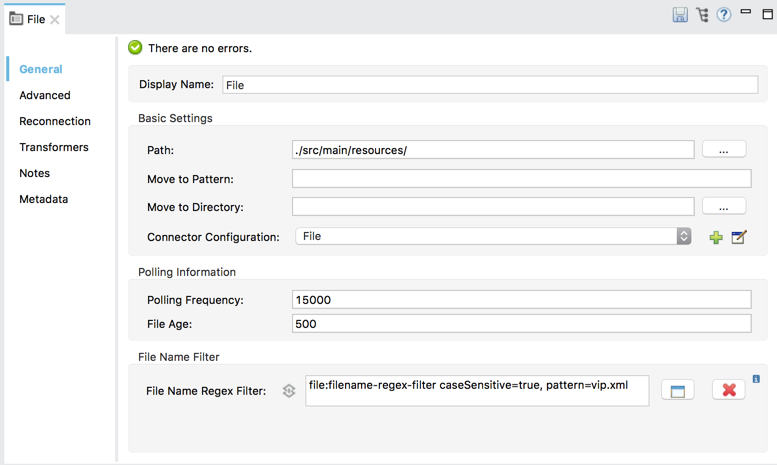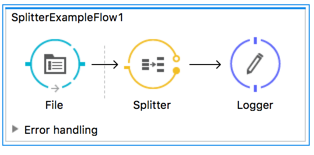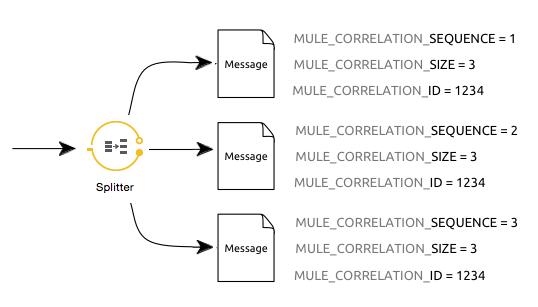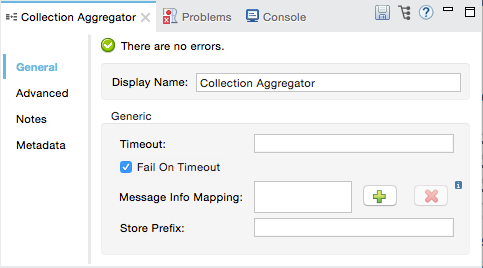Studio Visual Editor

| Field | Description |
|---|---|
Display Name |
Customize to display a unique name for the splitter in your application. Default is |
Enable Correlation |
Specifies whether Mule should give outgoing messages a correlation ID. Options are:
Default is |
Message Info Mapping |
Optional. If this child element is not configured, Example: |
Expression |
Expression to define how to split the message. This is a required field. No default value. |
XML Editor or Standalone
Simple Splitter
<splitter expression="#[xpath3('//item')]" doc:name="Splitter" enableCorrelation="IF_NOT_SET"/>xml| Element | Description |
|---|---|
splitter |
Splits a message into separate fragments, then sends these fragments one at a time to the next message processor in the flow. |
| Attribute | Description |
|---|---|
doc:name |
Customize to display a unique name for the splitter in your application. Note: Attribute not required in Mule Standalone configuration. |
expression |
Expression to define how to split the message. This is a required field. |
enableCorrelation |
Specifies whether Mule should give outgoing messages a correlation ID. Options are:
|
Advanced Splitter Including a Child Element
Note that this example includes the optional child element, expression-message-info-mapping. Use this child element only if your aggregation (later in your flow) is extremely customized and the standard correlation id set by Mule does not meet your needs.
|
<splitter expression="#[xpath3('//item')]" doc:name="Splitter" enableCorrelation="IF_NOT_SET">
<expression-message-info-mapping messageIdExpression="#[java.util.UUID.randomUUID().toString()]" correlationIdExpression="#[xpath3('//order/@id')]"/>
</splitter>xml| Child Element | Description |
|---|---|
expression-message-info-mapping |
Optional. If this child element is not configured, |
| Attribute | Description |
|---|---|
messageIdExpression |
An expression that sets a custom message ID for each of the split messages. Must result in unique message Ids. |
correlationIdExpression |
An expression that sets a custom correlation ID for the split messages. |










